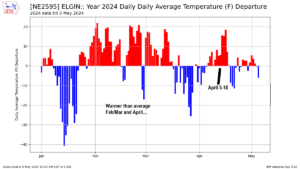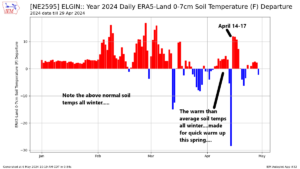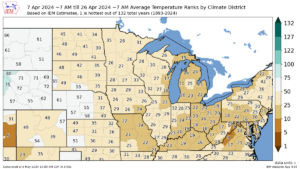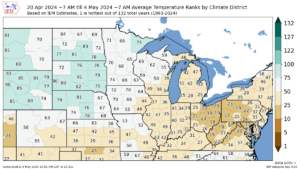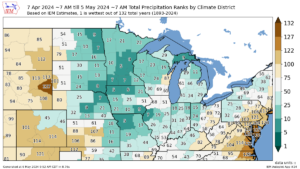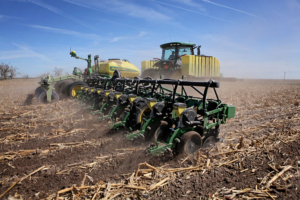
With the 2025 planting season fast approaching, we wanted to give a quick update as we begin thinking about planting. As is the case every year, keep in mind that planting conditions will be different than what we experienced last year. Soil temps will warm up quickly, much as they did last year, if the longer range forecasts hold true (see weather outlook below for more info). However, current soil moisture conditions heading into planting are on the dry side versus last couple of years (though rain is forecasted next week). Because of the lack of moisture and snow cover this past winter leading to lack of breakdown of crop residue, expectations are that crop residue will be more of concern for planting than last couple of years….more like what was seen in 2022 (May derecho year).
- Early Spring conditions and weather outlook…
- Cold soils and Corn/Soybean Emergence & Disease…
- Things to Keep in Mind when Planting Early…
- Plant First & Hybrid Stress Emergence Ratings…
EARLY SPRING CONDITIONS & WEATHER OUTLOOK
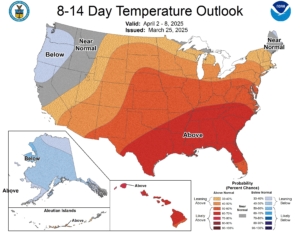
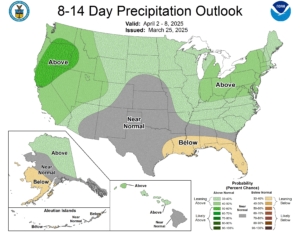
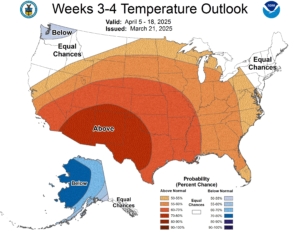
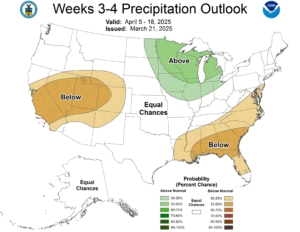
While these maps must be taken with a ‘grain-of-salt’, they do give us a general trend outlook. Note that soil temps will warm up quickly if the 8-14 day and 3-4 week forecasts hold true. Moisture is forecasted over next 7-10 days, but outlook appears to be more normal amounts than above-normal amounts. See link below for total moisture amounts over next 10 days.
Total Precipitation Forecast through Apr 4
Besides having equipment ready to go before planting, 2025 looks to be a year where it will be important to make sure your pivots are ready-to-run before planting begins. As was mentioned at the March Crop Shop, if dry conditions persist through April into May, the pivot will be a critical management tool for achieving uniform stands and improving weed control.
COLD SOILS AND CORN & SOYBEAN EMERGENCE
Optimal soil temperatures for planting corn is 50 degrees and above. Imbibition of cold water can lower germination rates and cold soil temperatures can delay emergence allowing for more diseases to set into the seedling. If temperatures go as predicted above, we have a good chance for rapid soil temperature improvement, however, it will still take 4-5 days of such temperatures to reach minimal planting temperatures, especially on a consistent basis, so one will want to allow for a couple of warm days before dropping planter in the ground (as always, what the nighttime temperatures will be is the key thing here). Here is a quick look at how a seed germinates. Imbibition of soil water happens within the first 48 hours and is why it is critical to plant when soil conditions and soil temperatures are right. Main point to keep in mind, is that the best time to plant is heading into a 2-4 day warm temperature period right after planting. Most reduced stands occur when planting into a cold spell, or before giving the soil temperatures time to warm up some right after a cold period. See link below for more info.
Soil Temperature and Cold Emergence
Because we always have variable temperatures during planting season, we recommend increasing soybean (by 10k/a) and corn (by 1-2k/a, unless already dropping 34-35k) populations when planting early. We tend to plant soybeans when it seems to cold for corn, but soybeans are really not any better out-of-the-ground than corn….just less risk involved versus corn. Keep in mind also, that the amount of crop residue will play a role here, besides temps.
DAYS TO EMERGENCE: SOYBEAN AND CORN
This graph helps explain days to emergence that it takes for both corn and soybeans when soil temps are at different levels. When soil temps are at 50-55 degrees it could take 3 weeks to see emergence. The next graph shows why we recommend planting soybeans early – it’s to maximize our flowering and poding days to allow for more time (days) for pods to set.
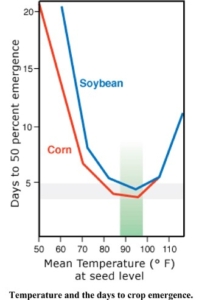
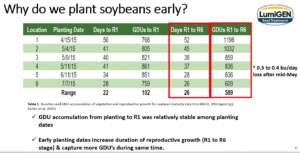
SOYBEAN/CORN EMERGENCE PROCESS:
Soybean Emergence:
Imbibitional Phase:
- Happens less than 24 hours; typically 8-12 hours. After imbibitional phase ends, the risk of chilling injury also ends.
Osmotic Phase:
- A much slower uptake of water occurs. Seedlings can be more tolerant to soil temps as low as 35-40 degrees. Will increase days of emergence and increase risk of soil borne pathogens if soil is cool.
Corn Emergence:
Wait to plant until soil is at 50-55 degrees
- Kernel moisture = 10-12% @ planting
- Imbibition of soil water
- Kernel moisture = 30%
- Soil at 50-55oF
- Enzymes: starch -> sugar
Typically 80 GDU’s: radicle emergence
Typically 130 GDU’s: plant emergence
THINGS TO KEEP IN MIND WHEN PLANTING EARLY
- Fluctuating soil temperatures can cause imbibitional seed chilling, erratic emergence and cold temperature injury
- Average last freeze date: 3rd-4th week in April for Central Nebraska…
- Seed Soil Contact is key to fast emergence and stand establishment…..soils that are too wet can lead to side wall compaction, crusting and poor seed to soil contact. In dry conditions, it gets more difficult to get good seed/soil contact as air pockets are increased due to loose and crumbly soil structure, which is why having pivots ready-to-run is key here.
- Herbicide injury can occur more often in cool, wet soils where the plant isn’t growing at an optimal pace.
- Planting Depth….Optimum planting depth for corn is 1 1/2 to 2″, with 2″ best under normal conditions as this is best for optimal nodal root development. Soil temperature fluctuates more in the top 1” = one reason why we plant at 1 1/2 to 2″ deep. Never plant shallower than 1 1/2″ and we see no reason to go deeper than 2 1/2″. Always err on the deeper side vs. the shallow side for depth. More bushels are lost from too shallow than too deep planting. Optimum soybean planting for soybeans is 1-2″…err on the deeper side under cold conditions. If soil conditions stay dry, expect soil conditions to be harder than normal and seedbed will be ‘crumbly’ with high amount of air pockets, impacting planting depth and reducing seed-soil contact.
- Plant populations….Consider increasing population drop under heavy residue and cooler conditions. This is especially so for soybeans….if planting in April consider bumping up soybean seed drop by 10% to offset adverse weather conditions….even more needed if planting in April and have a tilled seedbed. Most of the time any replant discussions would’ve been eliminated had seed drop been bumped up at planting. Seed corn maggots have been an issue the last few years on tilled, sandy soils when planting in April. In these situations, it is recommended to use Lumiderm insecticide seed treatment for increased protection from seed corn maggots. See link below for suggested plant populations by hybrid and hybrid x environment interactions for northeast Nebraska from Pioneer.
2025 Pioneer Planting Rate Suggestions & Hybrid x Enivronment
- Soybean planting date: UNL research shows that you can lose up to ½ bu of yield potential per day after May 1st. Just remember, the earlier you can plant you maximize the days of flowering and pod set to give you more time for re-flowering and setting more pods. (Refer to picture referenced earlier in this update)
- Soybean seeding rate: we recommend 140,000-160,000 seeding rates. This seems to give us a good compromise between seed cost and potential loss from storms or other unforeseen events. Here are a few scenarios to consider when looking at seeding rates:
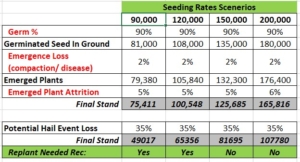
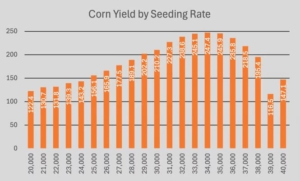
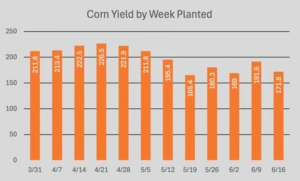
The above graphs show Corn Yield by Seeding Rate and Corn Yield by Week Planted for Nebraska using Granular Insights data from Pioneer Hi-bred. The data shows what we have seeing in our geographic area as well.
See link below for more planting information, tips, and resources from Pioneer: 2025 Pioneer Planting Guide and Resources
PLANT FIRST RECOMMENDATIONS
One of the most frequently asked question is “What product should I plant first?” With the cooler soil temperatures normally experienced at the beginning of planting, we believe that it is important to start with a hybrid that shows strong emergence and early vigor. The below bullet points show our recommendations for “plant first” products if soil temps are cool. The hybrids are listed by maturity not by how well they emerge. These are products that have shown to have strong emergence and early vigor over the past several seasons. Selecting one of these hybrids to start with can help provide the best chance for optimum emergence when soil temperatures are cooler at the start of planting. However, considering how fast our soils can warm up, and if one is planting into a warm stretch, we don’t have an issue with starting with most any hybrid…key is the first 48-72 hours after planting. Keep in mind the 2-5 day forecast ahead of anytime you are planting. Remember also, that we will continue to experience soil temperature fluctuations as we go through planting….whether planting in April or May….keeping right product, for right acre is just as important.
- 105-109 CRM – P0487, P05466*, P0622*, P0859, ,P09944*, P0924
- 110-118 CRM – P1164*, P1122, P1170, P13050*, P13476Q*, P13777, P1413, P1563, 17677
- * – very strong emergence….
CORN AND SOYBEAN EARLY SEASON DISEASE REMINDER & LumiGEN Seed treatment:
Early planting, cool and possibly wet soils, all come with the increased risk of early season diseases. Keep in mind that Pioneer has the industry-leading seed treatments on corn and soybeans. No company has more active ingredients. A new addition to the LumiGen soybean seed treatment for 2025 is Lumiante fungicide. This product adds Ethaboxam fungicide to the mix for greatly improved Pythium control. Pioneer has added Ethaboxam to corn for the past number of years now and it was a ‘game-changer’ when it first came out. Our expectations are to see this in soybeans as well. No seed company in the industry offers the number of MOA’s that Pioneer does. We have seen the difference vs. competitor over the past few years!
2025 LumiGEN Soybean Treatment offering 2025 LumiGen Corn Seed Treatment
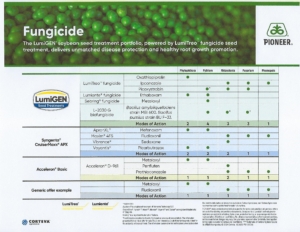
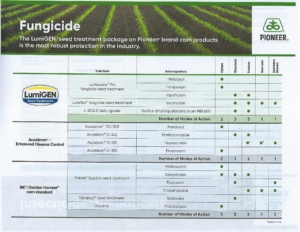
Please contact us with any questions or comments you may have. Thank you for your business!!
Have a safe planting season!!
Starman Seed & Supply, Inc.

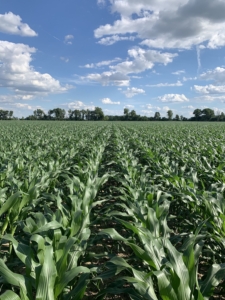
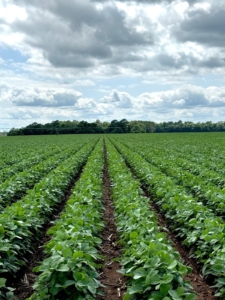
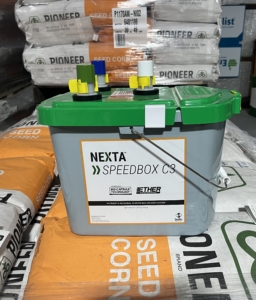
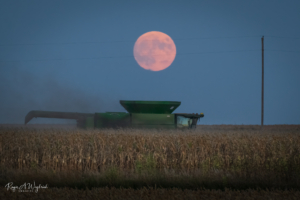
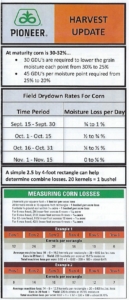
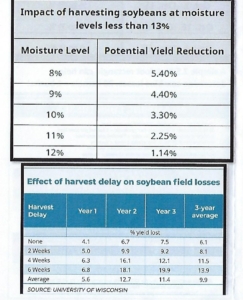
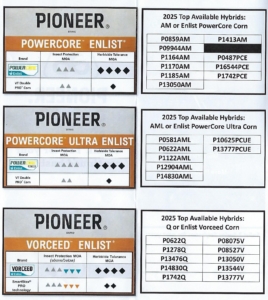
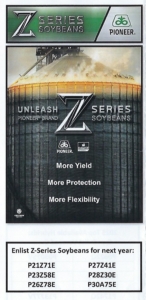
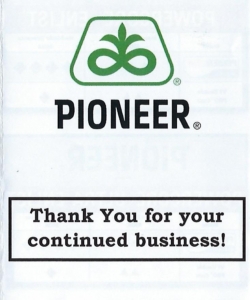

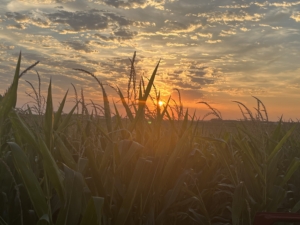
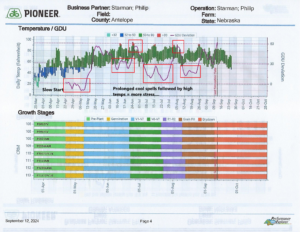
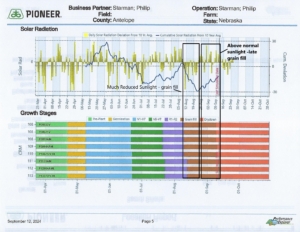
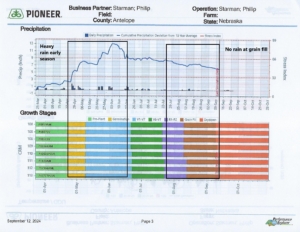
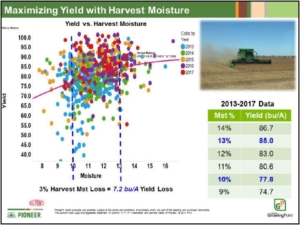

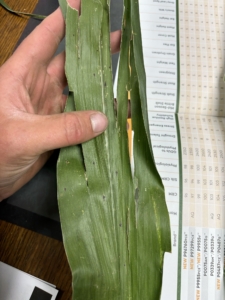
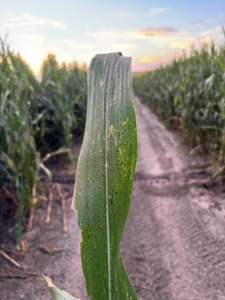
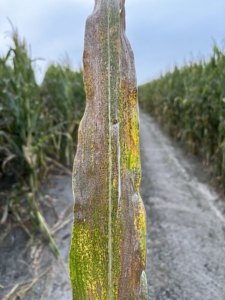
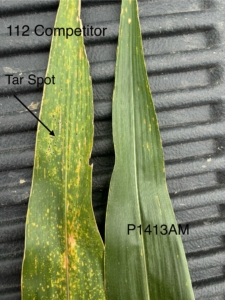
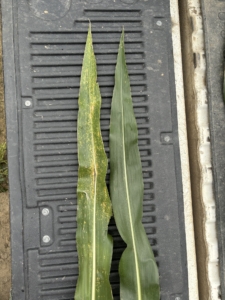
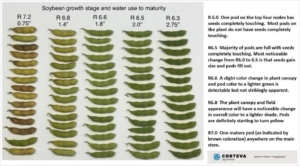
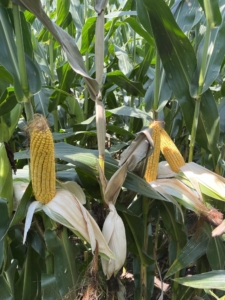
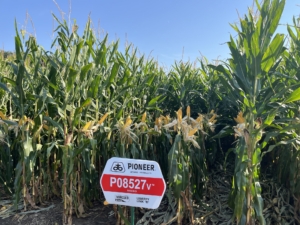
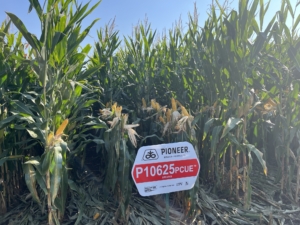
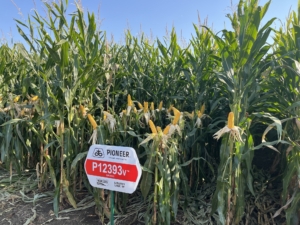
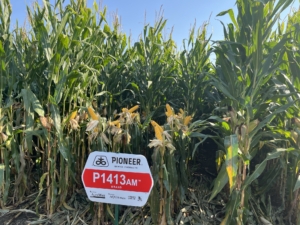
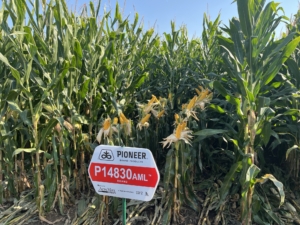
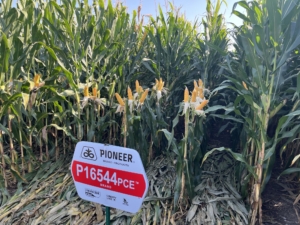
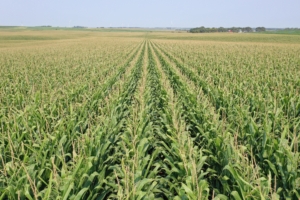
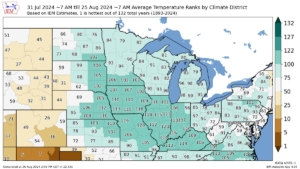
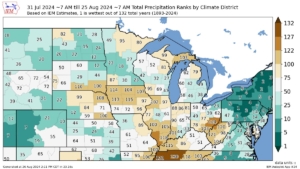
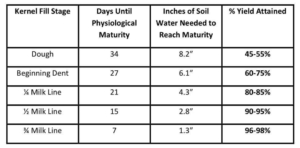 From the chart, it shows 1/4 mile line needing 21 days to maturity….which means we still have three weeks (and I would like to see 4 weeks for best tst. weights, etc.) before crop is finished….don’t shutoff too early. At R6, soybeans still need 2-3 inches to finish. All of these figures are dependent upon temperature and humidity
From the chart, it shows 1/4 mile line needing 21 days to maturity….which means we still have three weeks (and I would like to see 4 weeks for best tst. weights, etc.) before crop is finished….don’t shutoff too early. At R6, soybeans still need 2-3 inches to finish. All of these figures are dependent upon temperature and humidity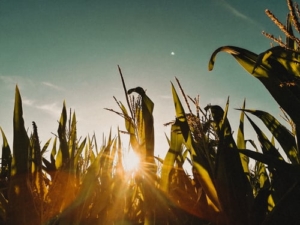
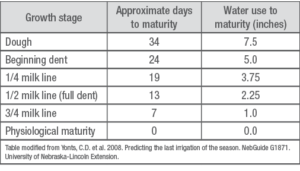
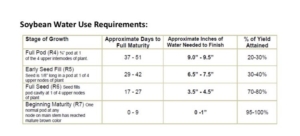
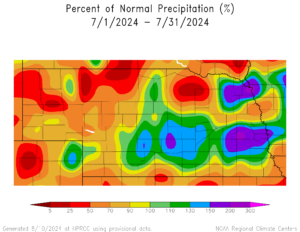
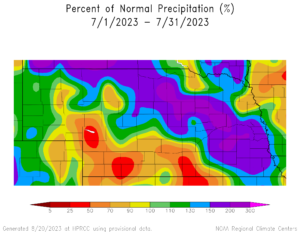
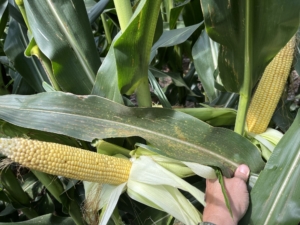 This disease bears monitoring over next few weeks as it’s greatest impact will be on late-season plant health. Those fields which show the highest incidence of the disease will be a prime candidate for early harvest.
This disease bears monitoring over next few weeks as it’s greatest impact will be on late-season plant health. Those fields which show the highest incidence of the disease will be a prime candidate for early harvest.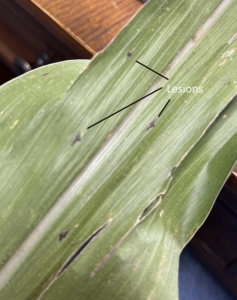 Impact from this disease will also be on late-season standability. We will update for any impact on harvest as the growing season progresses to the finish line. Also seeing some Gray Leaf Spot starting to come in on lower leaves in some fields, along with Northern Corn Leaf Blight lesions showing up in hybrids that are not as tolerant to this disease. Starting to see some Goss’s Wilt show up in the hailed areas. Overall leaf disease in corn is higher than the past few years.
Impact from this disease will also be on late-season standability. We will update for any impact on harvest as the growing season progresses to the finish line. Also seeing some Gray Leaf Spot starting to come in on lower leaves in some fields, along with Northern Corn Leaf Blight lesions showing up in hybrids that are not as tolerant to this disease. Starting to see some Goss’s Wilt show up in the hailed areas. Overall leaf disease in corn is higher than the past few years.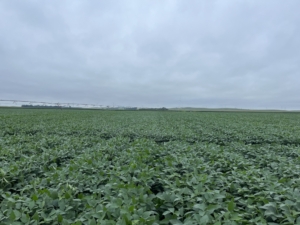
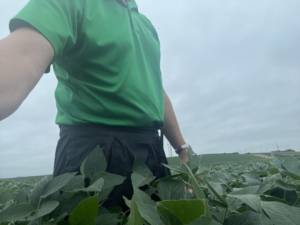
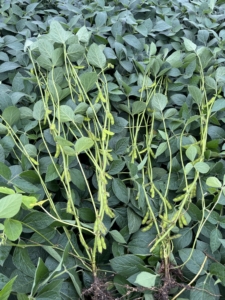
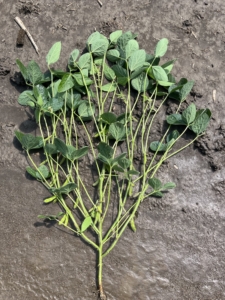
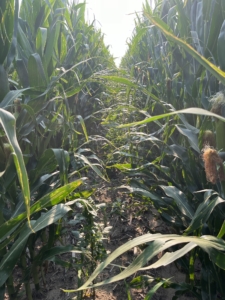
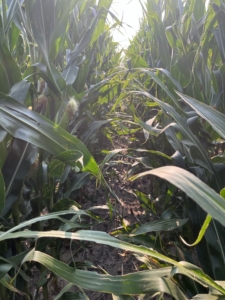
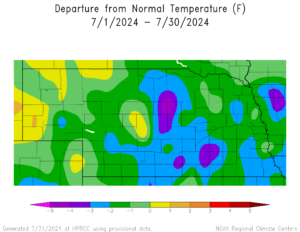

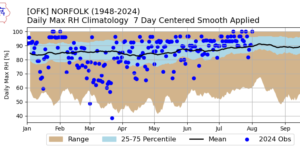
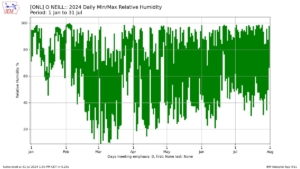
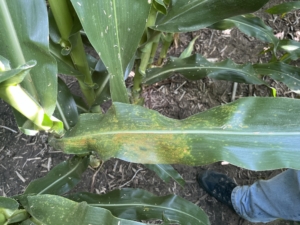
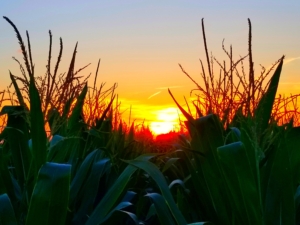
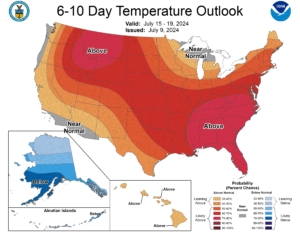
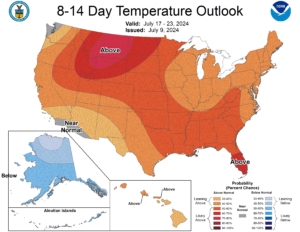
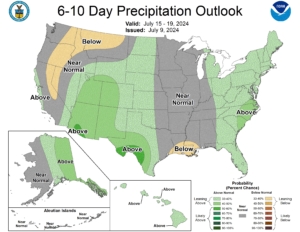
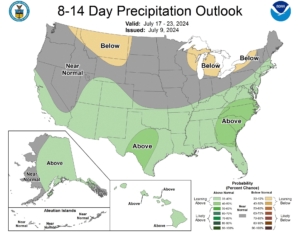
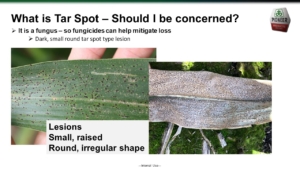
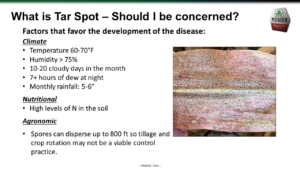
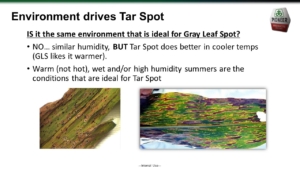
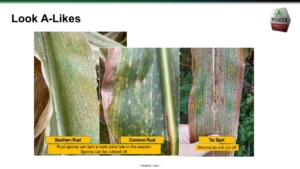
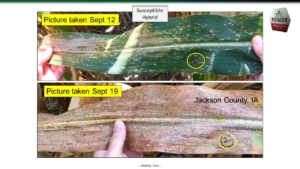
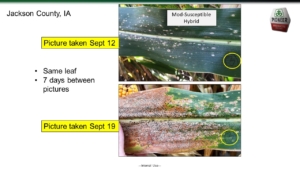
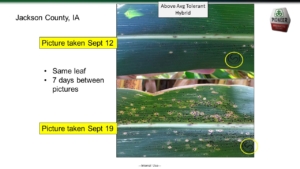
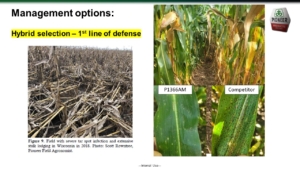
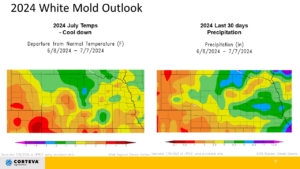
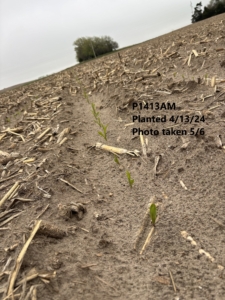
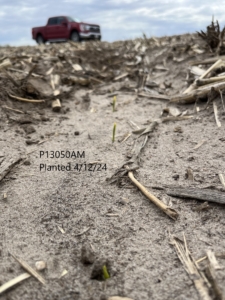
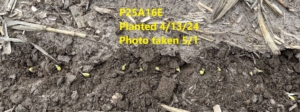
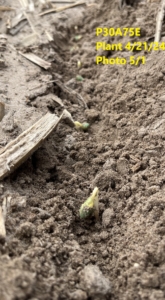 (second corn photo was taken on 5/1)
(second corn photo was taken on 5/1)